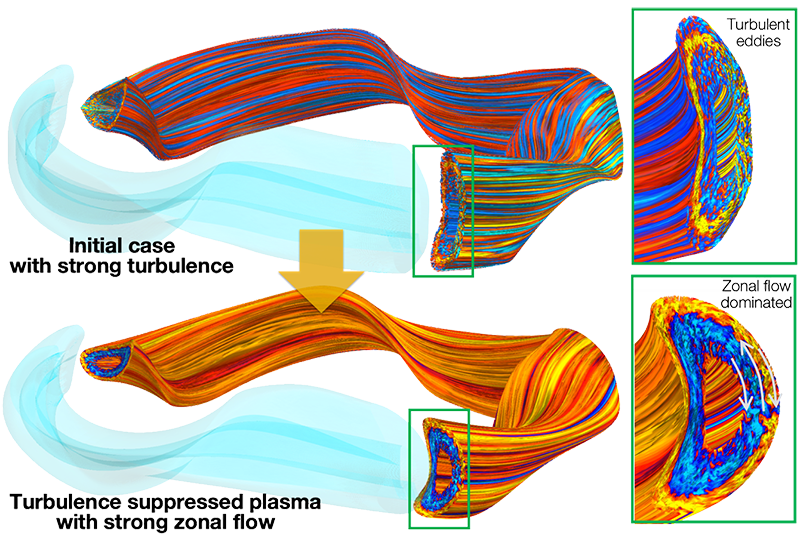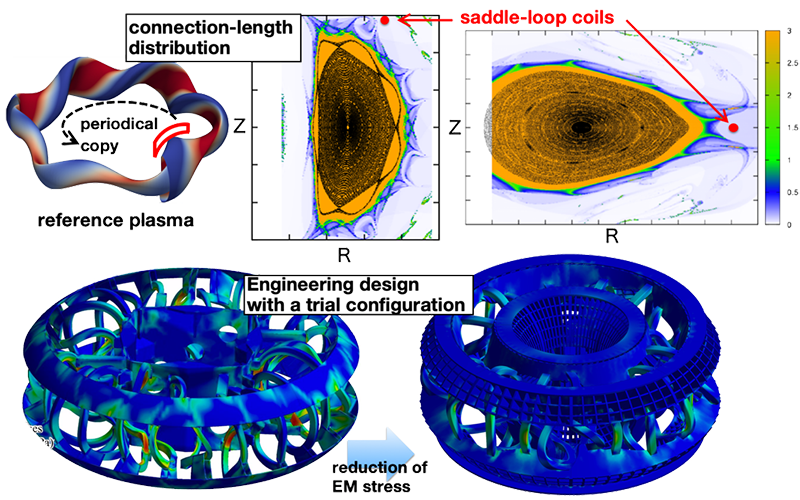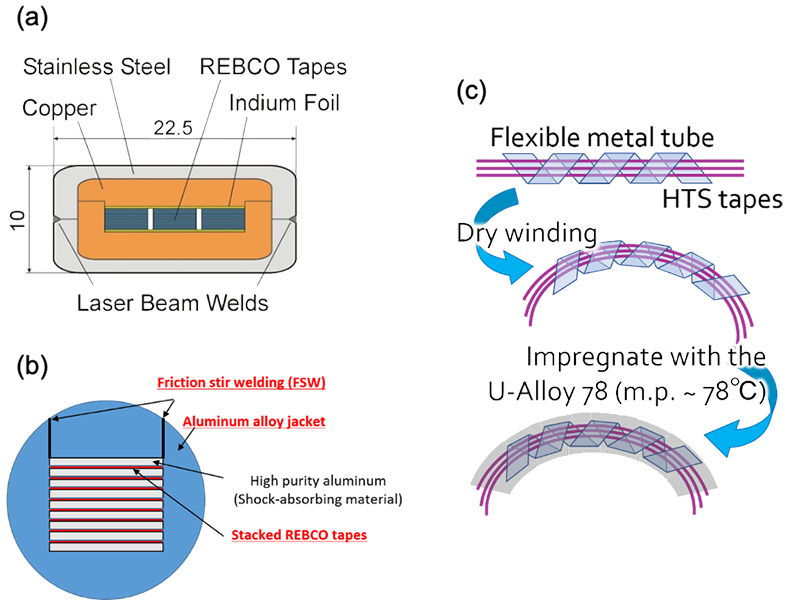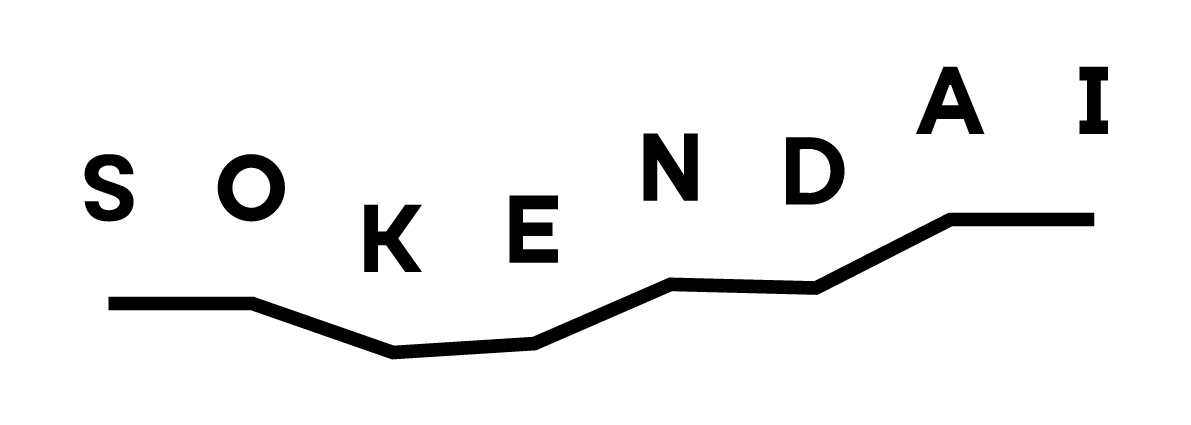Mission of the Task force for next research project
The task force for next research project has been established in the late 2018 for prospecting next research projects beyond the LHD. The main tasks are (1) establishment of research strategy that reflect the view of the entire domestic research community in the field of the plasma science and nuclear fusion research, and (2) investigation of the next research plan beyond the LHD.
In regard to the first task, the inter-university liaison conference in which foremost research theme to be addressed by academia will be discussed is prepared in the framework of the NIFS general collaboration research. In the inter-university liaison conference, it will be also discussed the complementary role of the next research projects in the research community.
In regard to the second task, looking ahead to the future importance of the non-linearity and structure formation in magnetically confined plasmas, the plasma confinement experiment project based on the newly developed concept has been proposed. The goals of this project are creation and experimental verification of a new magnetically confined plasma in which various physical mechanisms including non-linearity and structure formation are controlled by three-dimensional magnetic field for the first time ever in the world. The outcome of the project will go a long way toward alleviating the engineering requirements for the realization of fusion reactor by improving plasma confinement properties. Other important perspectives of the project are to provide a common platform for the plasma science and nuclear fusion research community, to advance the cultivation of human resources, and to enhance linkages and cooperation among different research areas as inter-university research institute and international center of excellence.
In order to ensure the continuous and proper implementation of the next research projects, the following three preparative studies have been launched.
- Research for creating a next generation magnetic configuration,
- Creation of innovative magnetic configuration is addressed through the study of theoretical model, the exploration of new optimization factor and development of the mathematical optimization techniques.
- Development of high temperature superconducting (HTS) conductor,
- HTS conductor development study is addressed in order to assess the technological feasibility.
- Verification of new key concept and method using LHD.
- The working hypotheses and outcomes of the preparative studies is verified by using LHD and contribute to the confinement improvement of LHD.
Research for creating a next generation magnetic configuration
Toward innovative plasma confinement
Turbulence and the related transport phenomena have widely been observed in magnetically confined plasmas. Clarifications and controls of turbulence are key issues in fusion plasma research, and many experimental and theoretical studies have been devoted so far. One of the most important findings is the turbulence suppression by spontaneously generated zonal flow, which is recognized as a key mechanism leading to improved confinement in Large Helical Device (LHD), etc.
As a new activity, Next Generation Stellarator (NGS) creation research is extensively promoted. Significant progresses on the turbulence and zonal-flow modeling based on nonlinear gyrokinetic simulation studies are obtained, where the effects of nonlinearity, zonal-flow generation, and its geometric dependence in 3D magnetic field are incorporated to the modeling. Such an extended model for the turbulent transport enables us to explore novel helical plasmas with enhanced zonal flows and turbulence suppression, by utilizing mathematical optimization techniques. As exemplified in figure 1, the numerical exploration of 3D magnetic field geometry successfully found a helical plasma in which the turbulent transport is much reduced by enhanced zonal flows. Also, experimental studies in LHD in order to verify and extend the turbulence and zonal-flow modeling are being conducted.

An example of the numerical exploration for optimum 3D magnetic field structures. Enhanced zonal flows appear in the turbulence suppressed helical plasma(bottom).
Physics and engineering studies in NGS creation research activity
Toward a new discovery of innovative plasma confinement to accelerate the fusion plasma research, Next Generation Stellarator (NGS) creation research is extensively promoted. Combining and extending the current best knowledges from experimental and theoretical studies, a novel helical plasma, which has never been realized so far, is created. Here, the synchronized/integrated plasma confinement with the turbulence suppression by zonal flows, energetic particle confinement, and flexible peripheral structures is explored by fully utilizing the diversity of 3D magnetic field structures in helical systems. In addition to the physics studies, the engineering studies have been carried out as front-loading preparations for the feasible design of experimental devices, where some of engineering constraints are provided to the physics studies as feedback.
The turbulence-related physics studies are presented as a highlighted result above. Here, another activity on the peripheral magnetic field structures such as the leg-type and island-type divertors is introduced. The main objective on this study is to establish flexible controls of several divertor magnetic field structures by keeping almost same characteristics of the core plasma. To this end, numerical studies are conducted to find the optimum spatial configurations of external saddle-loop coils, where the distributions of connection-length and footprints on the vacuum vessel is systematically analyzed and compared. As shown in figure 2, the capability for both the leg-type and island-type divertor structures is confirmed. More extended analyses utilizing mathematical optimizations will be addressed.
In order to explore more wider possibility of the 3D magnetic configurations and coil designs, the numerical code for the mathematical optimization are also developed and extended, where both the modular coils and continuously winding coils are incorporated. Such numerical tools are useful not only for the physics studies, but also for the optimization in the engineering studies. Using a trial configuration for the neoclassically optimized helical plasma, the modular coils, the support structures, and the heating/observation ports are designed, as shown in figure 2. In addition to the evaluation of engineering constraints/limits, systematic investigations are in progress for the improved designs based on the optimizations of modular coils in some additional constrains such as the curvature and the coil-coil distance. Furthermore, advanced measurement systems for the turbulent fluctuations and macroscopic flow patterns are being investigated.

Two different peripheral magnetic field structures produced by external coils (top), and an example of the stress distributions in coils and support structures. (bottom).
Development of high temperature superconducting conductor
Application of a high-temperature superconducting (HTS) coil to the next research project has been studied because the HTS can be operated at higher magnetic field than a conventional low-temperature superconducting (LTS) coil and can enhance a confinement capability of a plasma experimental device. Moreover, the HTS coil can operate at higher temperatures than the LTS coil and can have extremely high stability and low heat load by its nature.
In the first phase, HTS superconductors with REBCO (RE Ba2Cu3O7, RE: rare earth) tapes have been developed with a goal of carrying 15 kA at 20 K and 10 T. In addition, the superconductor should be able to bend with a radius of less than 1 m without damage.
At present, we have been developing three types of conductors and confirming their performances, such as a critical current, at 77 K (liquid nitrogen temperature). The conductors are named: (a) STARS (Stacked Tapes Assembled in Rigid Structure), (b) FAIR (Friction stir welding, an Aluminum alloy jacket, Indirect cooling, and REBCO tapes), and (c) WISE (Wound and Impregnated Stacked Elastic tapes). Schematic diagrams are shown in figure 3. The common feature is that dozens of REBCO tapes are stacked in parallel in the conductor to increase the current capacity. Metals surrounding the tapes are different; copper and stainless steel for STARS; aluminum and aluminum alloy for FAIR; low-melting-point metal for WISE.
Conductors that are confirmed to have predetermined performances will be tested in a magnetic field at 20 K. Eventually, a demonstration coil will be fabricated and tested.

Schematic diagrams of three conductors developed for the next research project: (a) STARS, (b) FAIR, and (c) WISE.
Contact
National Institutes of Natural Sciences,
National Institute for Fusion Science
322-6 Oroshi, Toki, Gifu 509-5292, Japan
Phone: 0572-58-2148
E-mail: post-LHD(at)nifs.ac.jp
Core members:
Ryuichi SAKAMOTO,
Motoki NAKATA,
Kazuya TAKAHATA,
Kenichi NAGAOKA,
Suguru MASUZAKI,
Takuya GOTO

